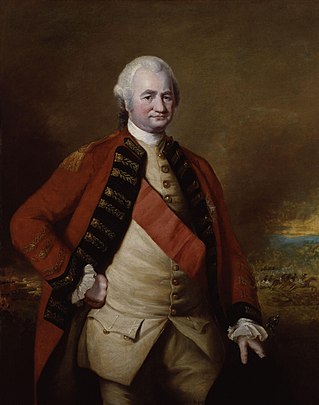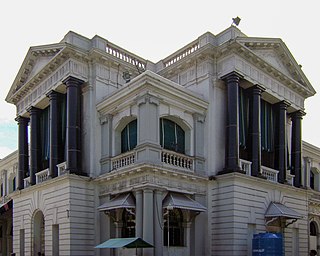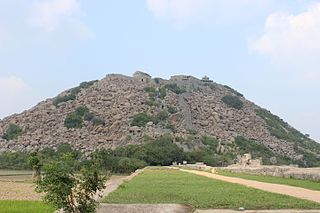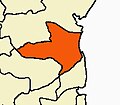
Elihu Yale was a British-American colonial administrator and philanthropist. Although born in Boston, Massachusetts, he only lived in America as a child, spending the rest of his life in England, Wales and India. Starting as a clerk, he eventually rose up to the rank of President of the British East India Company settlement in Fort St George, Madras. He later lost that position under charges of corruption for self-dealing and had to pay a fine. In 1699, he returned to Britain with a considerable fortune, around £200,000, mostly made by selling diamonds, and spent his time and wealth toward philanthropy and art collecting. He is best remembered as the primary benefactor of Yale College, which was named in his honor, following a sizable donation of books, portrait and textiles under the request of Rev. Cotton Mather, a Harvard graduate. No descendants of his have survived passed his grandchildren.

Robert Clive, 1st Baron Clive,, also known as Clive of India, was the first British Governor of the Bengal Presidency. Clive has been widely credited for laying the foundation of the British East India Company (EIC) rule in Bengal. He began as a writer for the EIC in 1744 and established Company rule in Bengal by winning the Battle of Plassey in 1757. In return for supporting the Nawab Mir Jafar as ruler of Bengal, Clive was guaranteed a jagir of £30,000 per year which was the rent the EIC would otherwise pay to the Nawab for their tax-farming concession. When Clive left India in January 1767 he had a fortune of £180,000 which he remitted through the Dutch East India Company.

Fort St. George is a fortress at the coastal city of Chennai, India. Founded in 1639, it was the first English fortress in India. The construction of the fort provided the impetus for further settlements and trading activity, in what was originally an uninhabited land. Thus, it is a feasible contention to say that the city evolved around the fortress. The fort currently houses the Tamil Nadu legislative assembly and other official buildings.

The Carnatic region is the peninsular South Indian region between the Eastern Ghats and the Bay of Bengal, in the erstwhile Madras Presidency and in the modern Indian states of Tamil Nadu and southern coastal Andhra Pradesh. During the British era.

Cuddalore, also spelt as Kadalur, is the city and headquarters of the Cuddalore District in the Indian state of Tamil Nadu. Situated south of Chennai, Cuddalore was an important city and port during the British Raj.

Chennai, formerly known as Madras, is the capital of the state of Tamil Nadu and is India's fifth largest city. It is located on the Coromandel Coast of the Bay of Bengal. With an estimated population of 8.9 million (2014), the 383-year-old city is the 31st largest metropolitan area in the world.

The Carnatic Wars were a series of military conflicts in the middle of the 18th century in India's coastal Carnatic region, a dependency of Hyderabad State, India. Three Carnatic Wars were fought between 1744 and 1763.

Gingee, also known as Senji or Jinji and originally called Singapuri, is a panchayat town in Viluppuram district in the Indian state of Tamil Nadu. Gingee is located between three hills covering a perimeter of 3 km, and lies west of the Sankaraparani River.

The Thanjavur Nayakdynasty were the rulers of Thanjavur in the 15th and 17th centuries. The Nayaks, who belonged to the Telugu-speaking Balija social group were originally appointed as provincial governors by the Vijayanagara Emperor in the 15th century, who divided the territory into Nayak kingdoms which were Madurai, Tanjore, Gingee and Kalahasthi. In the mid-15th century they became an independent kingdom, although they continued their alliance with the Vijayanagara Empire. The Thanjavur Nayaks were notable for their patronage of literature and the arts.

The Carnatic Sultanate was a kingdom in South India between about 1690 and 1855, and was under the legal purview of the Nizam of Hyderabad, until their demise. They initially had their capital at Arcot in the present-day Indian state of Tamil Nadu. Their rule is an important period in the history of the Carnatic and Coromandel Coast regions, in which the Mughal Empire gave way to the rising influence of the Maratha Empire, and later the emergence of the British Raj.

Vellore Fort is a large 16th-century fort situated in heart of the Vellore city, in the state of Tamil Nadu, India built by Vijayanagara kings. The fort was at one time the headquarters of the Aravidu Dynasty of the Vijayanagara Empire. The fort is known for its grand ramparts, wide moat and robust masonry.
Rama Deva Raya ascended the throne after a gruesome war in 1617 as the King of Vijayanagara Empire. In 1614 his father, Sriranga II the preceding King and his family were gruesomely murdered by rival factions headed by Jagga Raya, who was one of their kins. Rama Deva himself was smuggled out of the prison by Yachama Naidu, a faithful commander and the viceroy of earlier king Venkata II.
Sriranga III was the last ruler of the Vijayanagara Empire, who came to power in 1642 following the death of his uncle Venkata III. He was also a great grandson of Aliya Rama Raya.
Nathaniel Higginson was an English politician and a scion of the Higginson family of Salem, Massachusetts who served as the first Mayor of Madras, and later as the President of the colony from 3 October 1692 to 7 July 1698.

Edward Harrison was a naval officer and official of the East India Company and British politician who sat in the House of Commons from 1717 to 1726. He served as the President of Madras from 11 July 1711 to 8 January 1717.
Nathaniel Elwick was a British merchant who served as the President of Fort St. George from 15 October 1721 to 15 January 1725.

The Kingdom of Ramnad or Ramnad estate was a permanently settled kingdom and later zamindari estate that existed in the Ramnad subdivision of the Madurai district and later Ramnad district of the erstwhile Madras Presidency in British India from 1601. It was ruled by the rajas also had the title of Sethupathi. Madurai Nayaks ruled the Ramnad area with the appointed chieftains between 14th to 16th century CE, and in 17th century CE the appointed governors expanded their power to establish "Ramnad Kingdom" which was also called as "Maravar Kingdom" by the British. In 1795 CE, after an heir dispute, they were reduced to the status of zamidari by the East India Company. After the independence of India in 1947 the estates were merged in the Union of India and in 1949 all rulers lost the ruling rights, privy purse was also finally abolished in 1971.

The Nayaks of Gingee (Senji) were rulers of the Gingee principality of Tamil Nadu between 16th to 18th century CE. They were subordinates of the imperial Vijayanagara emperors, and were appointed as provincial governors by the Vijayanagar Emperor who divided the Tamil country into three Nayakships viz., Madurai, Tanjore and Gingee. Later, after the fall of the Vijayanagara's Tuluva dynasty, the Gingee rulers declared independence. While they ruled independently, they were sometimes at war with the Tanjore neighbors and the Vijayanagara overlords later based in Vellore and Chandragiri.

South Arcot District was a district in the Madras Presidency of British India. It covered the area of the present-day districts of Cuddalore, Kallakurichi and Viluppuram in the Indian state of Tamil Nadu. The district was divided into eight taluks and covered a total area of 13,510 square kilometres (5,217 sq mi). The administrative headquarters was the town of Cuddalore.



















